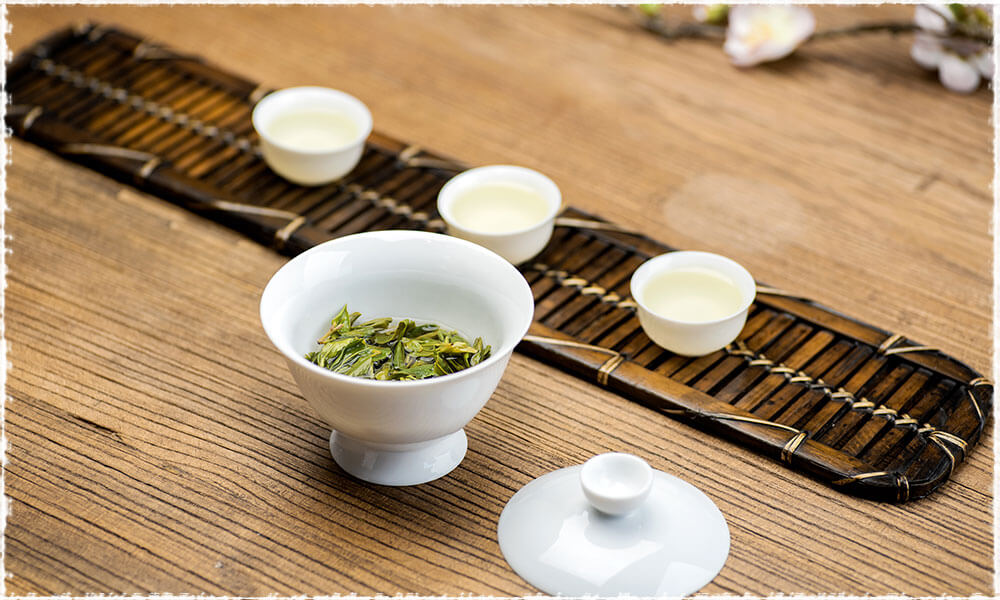| Tea’s Quantity | Water Temperature | Time and Steeps |
Water temperature highly influences the taste of tea liquid. The best temperatures for all kinds of teas are varied. Therefore, it is necessary to know more about the water temperature in order to get the best taste of a tea.
Best Temperatures for Different Teas
Low temperature(70℃ – 80℃): to brew some of green teas which have tender buds, such as Ming Qian Dragon Well and Bi Luo Chun Green Tea, and some high grade white teas such as Organic Silver Needle.


Medium temperature (80℃ – 90℃): to brew some Oolong with tender buds, or green tea with only tea leaves like Liu An Gua Pian, or some heavily withered white teas, such as White Peony, and Shou Mei.
High temperature (90℃ – 100℃): to brew Oolong tea with mature leaves only, such as Dong Ding (Tung Ting) Oolong Tea, Tie Guan Yin Iron Goddess, Da Hong Poa and post-fermented Pu-erh teas and fully fermented black teas.
Usually when brewing green tea, some people will brew it with 3g teas and 200ml boiled water and then brew it for 4-5 minutes to drink. The disadvantage of this brewing style is that the temperature of water was too high and could easily burn the young leaves. However, if brewing with too cold water, it will be very hard to steep out the taste of it.
How the Temperature Affects Tea Liquid
The amino acids in tea will dissolve in 60℃ water. And when water temperature is over 70 ℃, the vitamin C will be ruined under the heat, while the tannic acid and caffeine will dissolve. Therefore, if you use high temperature water to brew a fresh green tea, the tea liquid will become bitter and astringent and with less vitamins. Then why we use higher temperature on other teas, such as flower teas, black teas and low grade green teas? This is because the leaves of these teas are mature with low permeability. If we use a lower temperature, the constituents in tea leaves can’t dissolved in water.
And when brew Oolong or Puerh tea, we use more teas and the material of these teas are mature leaves, so we have to use 100℃ boiled water. Sometimes, we have to pour boiling water on the surface of our teapots to keep the heat.


Other Factors That Determine the Temperature
Did we warm the teapot?
Usually we will warm the teapot with boiled water. If pour water into a cold pot, the water temperature will decrease about 5℃. So we need to use a higher temperature or brew the tea a little longer.
Did we rinse tea?
Rinse is the step before first steep. We usually pour away the rinse liquid, then go on to the first steep. After rinse, the tea is warm and wet, and will be release the solute easier. This way, we will decrease the time of first steep.
Did we put the tea in a refrigerator?
If we brew a tea taken out from a refrigerator immediately, then we need to increase the temperature or length the time a little bit.
How to Get Different Water Temperature
Some people wonder how can we get a 70℃ water? Just to boil water to 70℃ or boil it up to 100℃, and then wait its cooling down to the target temperature? It depends. Water’s quality is very important in this case. For most 100℃ to kill the bacteria in water. But we still can’t let the water boil over and over again, because the amount of oxygen in water will decrease if water is repeatedly boiled. This will result a lack of aroma in tea liquid, as well as the unsmooth or even astringent taste.
If you enjoyed this article on tea, you might also like to read the following articles:
The Guide to Making White Tea – How to Brew White Peony Bai Mu Dan Tea
 Exploring the Charms of 2024 Spring Tea Garden with Angel
Exploring the Charms of 2024 Spring Tea Garden with Angel Yingde Black Tea
Yingde Black Tea Matcha vs. Green Tea Powder
Matcha vs. Green Tea Powder
